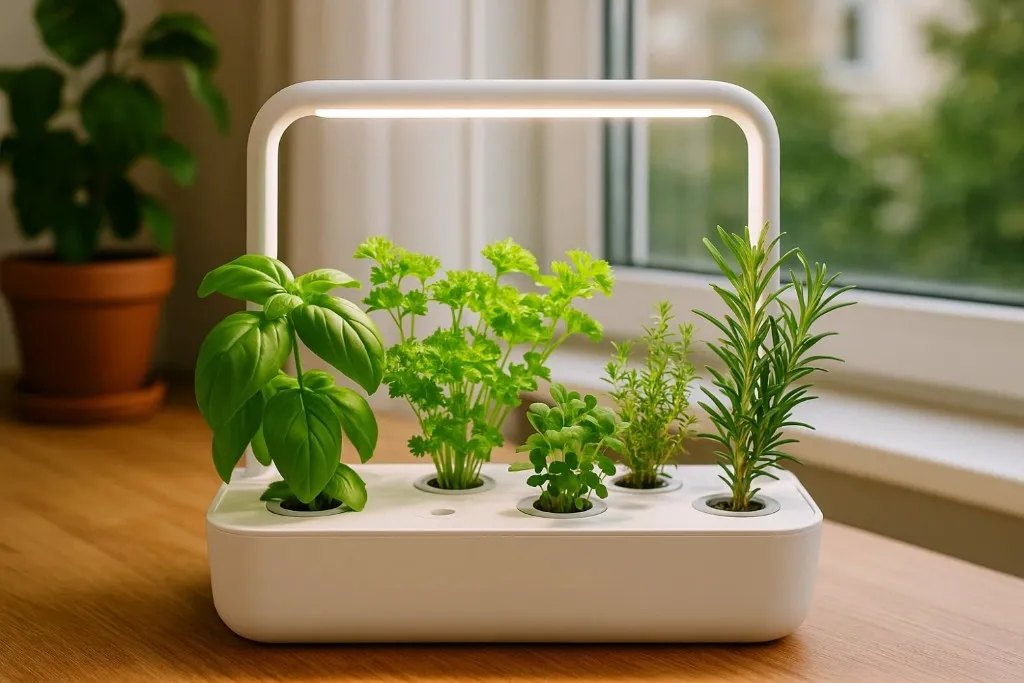Growing herbs indoors without soil has become a popular trend for those looking to enjoy fresh, home-grown flavors all year round. With the rise of space-saving solutions and eco-friendly practices, cultivating herbs indoors has never been easier. Whether you’re short on outdoor space, aiming to reduce your environmental footprint, or simply want a constant supply of herbs for cooking, soil-less gardening provides an innovative way to nurture plants.
This approach utilizes alternative growing methods like hydroponics, aquaponics, and even air-based systems, ensuring that herbs thrive indoors with minimal maintenance. Below are 15 ways you can grow herbs without soil and enjoy fresh greens anytime.
1. Hydroponic Systems
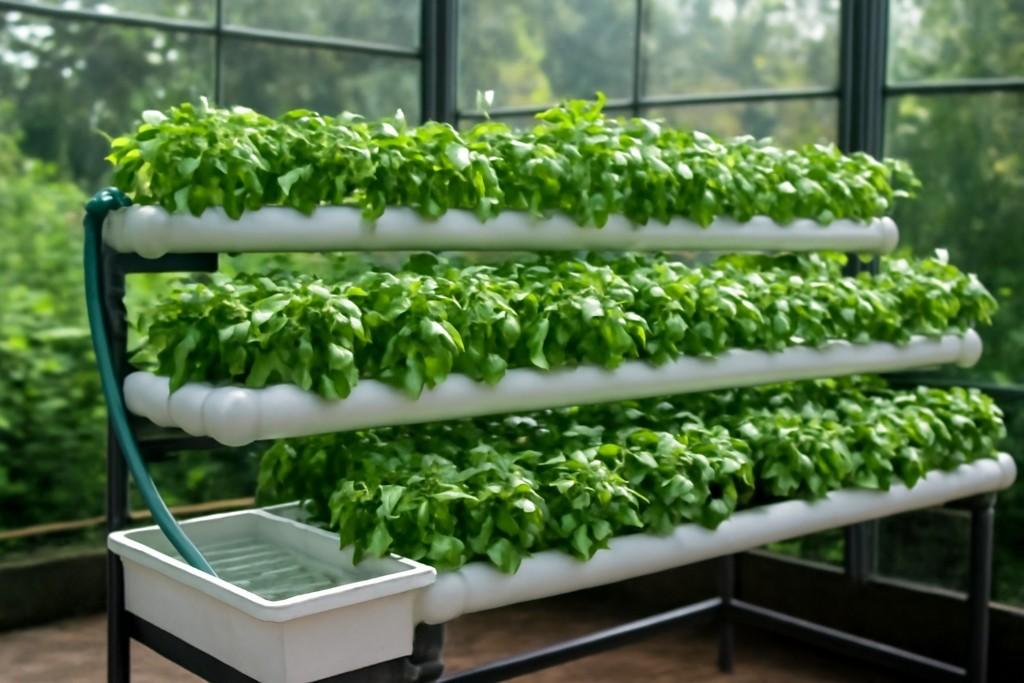
Hydroponics is one of the most popular methods for growing herbs indoors without soil. In a hydroponic system, plants are grown in a nutrient-rich water solution instead of soil. The roots are suspended in the water, and the plant absorbs nutrients directly.
This system allows for faster growth and is perfect for herbs like basil, mint, and cilantro. Hydroponic kits are available for home use, making this method accessible even for beginners. Additionally, it uses less water than traditional gardening, making it an eco-friendly option for urban dwellers.
2. Wick System
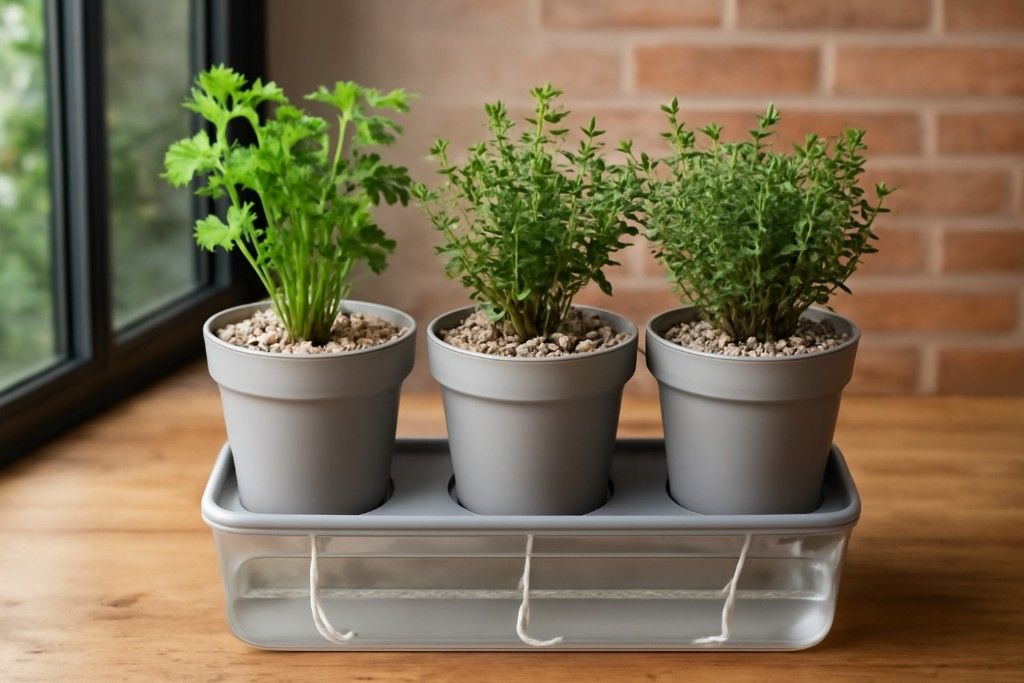
The wick system is a simple and effective way to grow herbs indoors without soil. In this system, a wick draws nutrient-rich water up from a reservoir into the growing medium, such as perlite or coconut coir. The herbs are placed in the medium, and the wick ensures that they receive adequate moisture and nutrients. This system works best for herbs like parsley, oregano, and thyme. The wick system requires minimal maintenance and is an affordable option for beginners looking to try hydroponics at home.
3. Aeroponics
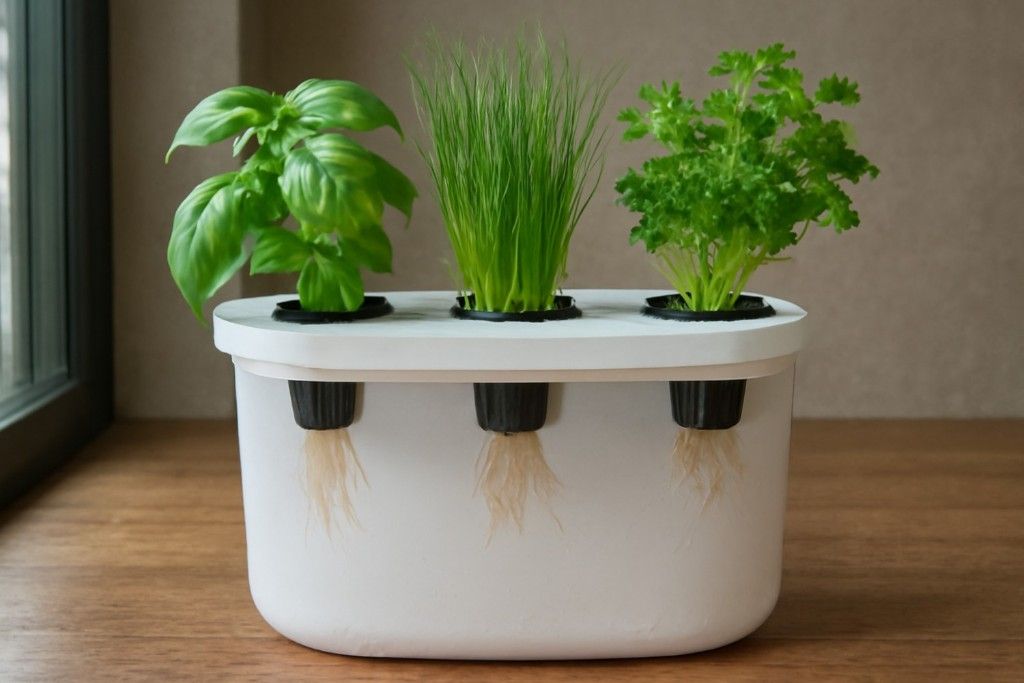
Aeroponics is an advanced method of growing herbs that involves suspending plants in the air and misting their roots with a nutrient solution. Unlike hydroponics, which relies on water, aeroponics uses air to provide oxygen to the roots, promoting faster and healthier growth.
This method is ideal for herbs like mint, chives, and basil. Aeroponic systems are compact, making them perfect for smaller indoor spaces. Although more complex to set up than other methods, aeroponics provides superior growth and yields, and it’s an efficient way to grow plants without soil.
4. Aquaponics

Aquaponics combines hydroponics with aquaculture to create a sustainable ecosystem for growing herbs indoors. In an aquaponic system, fish produce waste that is converted into nutrients for the plants, while the plants filter and purify the water for the fish. This symbiotic relationship provides a low-maintenance, eco-friendly solution for growing herbs.
Plants like mint, basil, and parsley thrive in an aquaponic system, and it’s a great option for people interested in both gardening and fishkeeping. Aquaponics can be a more involved setup, but it offers both plant and fish cultivation in one system.
5. Aquaculture-Based Herb Gardening
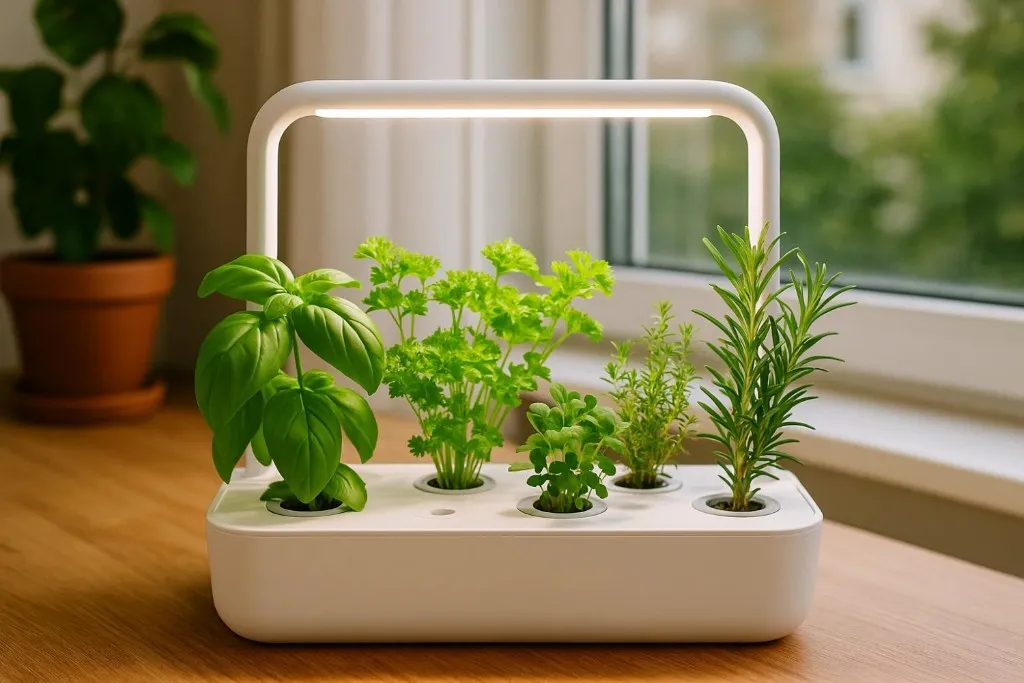
Aquaculture-based herb gardening is a subset of aquaponics, focusing solely on the cultivation of herbs in an aquatic environment. This method uses a closed-loop water system where herbs grow in containers placed above water tanks filled with fish. The fish waste provides organic nutrients for the herbs. Aquaculture-based systems are perfect for growing herbs such as cilantro, chives, and dill.
The plants are generally placed in net pots, and the water is recirculated to ensure a continuous nutrient supply. This setup requires minimal soil involvement and offers a sustainable, eco-friendly way to grow fresh herbs indoors.
6. Self-Watering Containers
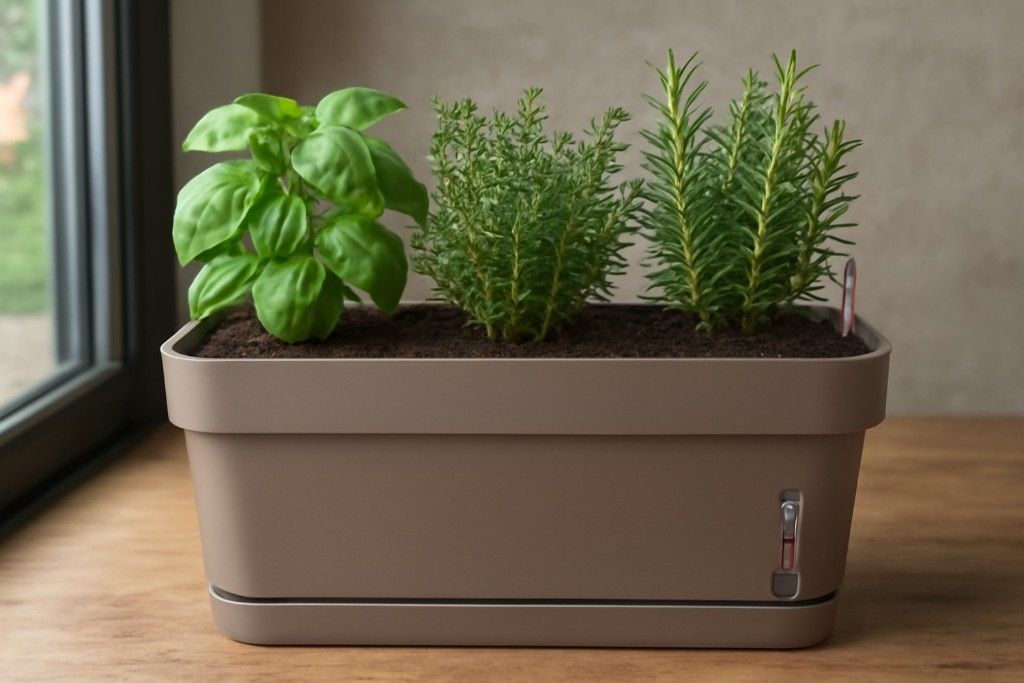
Self-watering containers are a fantastic way to grow herbs indoors without worrying about constant watering. These containers have a built-in reservoir at the bottom that gradually releases water to the plant’s roots, ensuring consistent moisture levels. The soil in the container can be replaced with soil-less mediums like coconut coir, making it ideal for growing herbs.
The self-watering system makes these containers low-maintenance, and they work well for herbs like basil, thyme, and rosemary. These systems are also more water-efficient compared to traditional gardening methods, as excess water is stored in the reservoir.
7. Hydroponic Herb Garden Kits
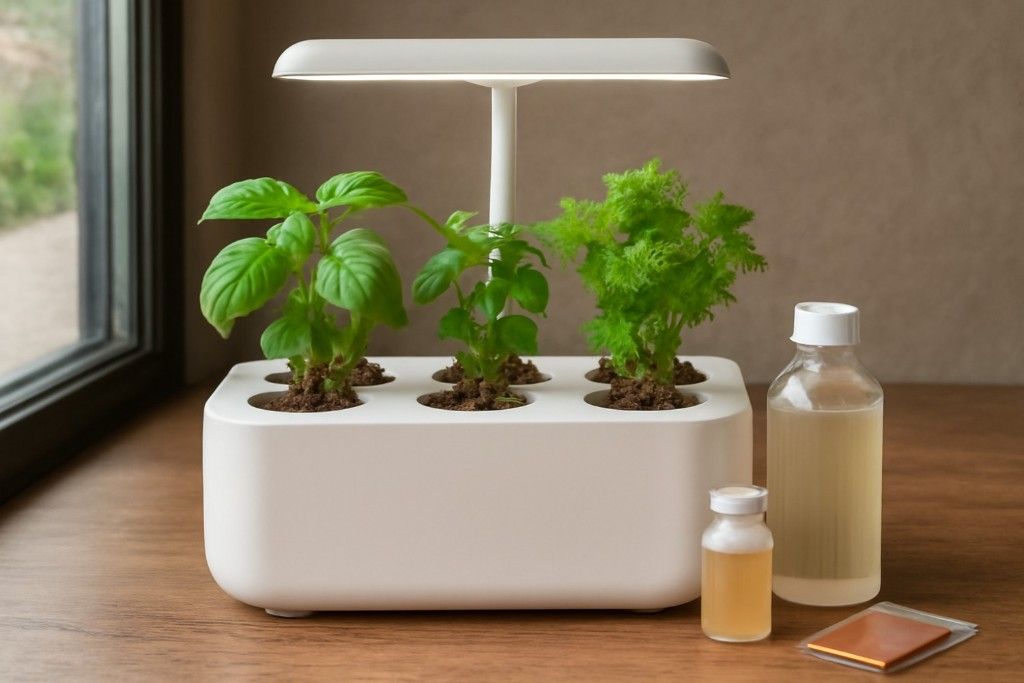
For those just starting with indoor gardening, hydroponic herb garden kits offer a simple and convenient way to grow herbs without soil. These kits typically come with everything you need, including a hydroponic system, growing medium, nutrient solution, and seeds.
With the help of these kits, growing herbs like basil, mint, and parsley indoors has never been easier. Most kits are designed to be user-friendly, and many include grow lights to ensure the plants get enough light to thrive indoors. These systems are compact and efficient, making them perfect for apartment dwellers.
8. The Kratky Method
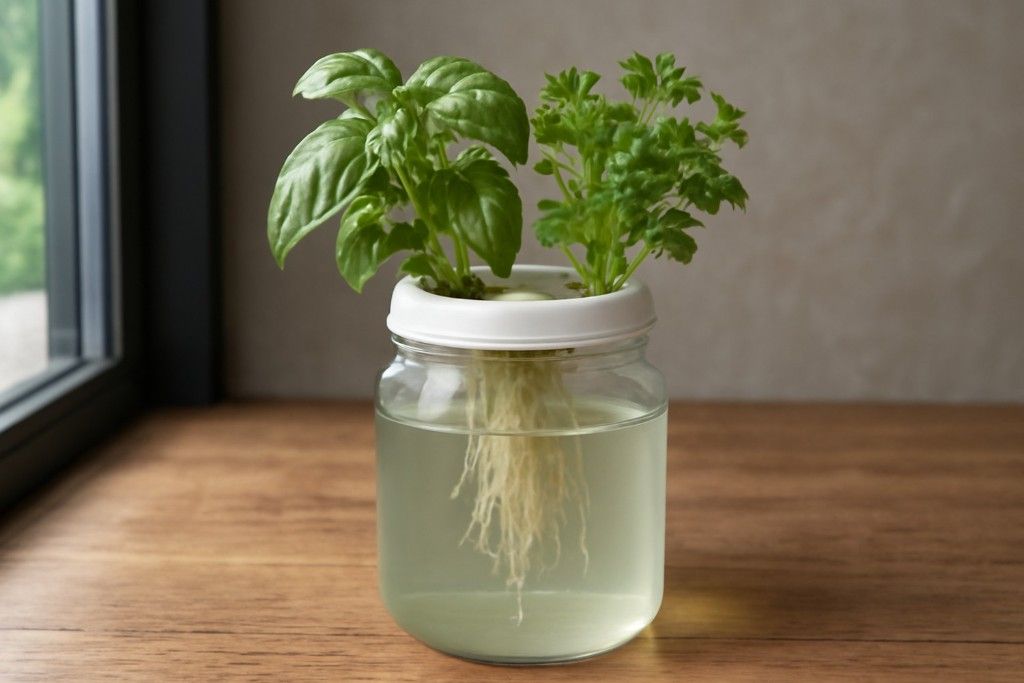
The Kratky method is a passive hydroponic technique that requires no pumps or aerators. In this system, plants grow in a container filled with a nutrient solution, with their roots submerged in the liquid. As the plants grow, the water level decreases, leaving an air gap above the roots that allows oxygen to reach them.
This method works well for leafy herbs like basil and cilantro. It’s a low-maintenance option and doesn’t require complex equipment, making it an excellent choice for beginners. Additionally, the Kratky method is water-efficient, ideal for small spaces.
9. Vertical Hydroponic Towers
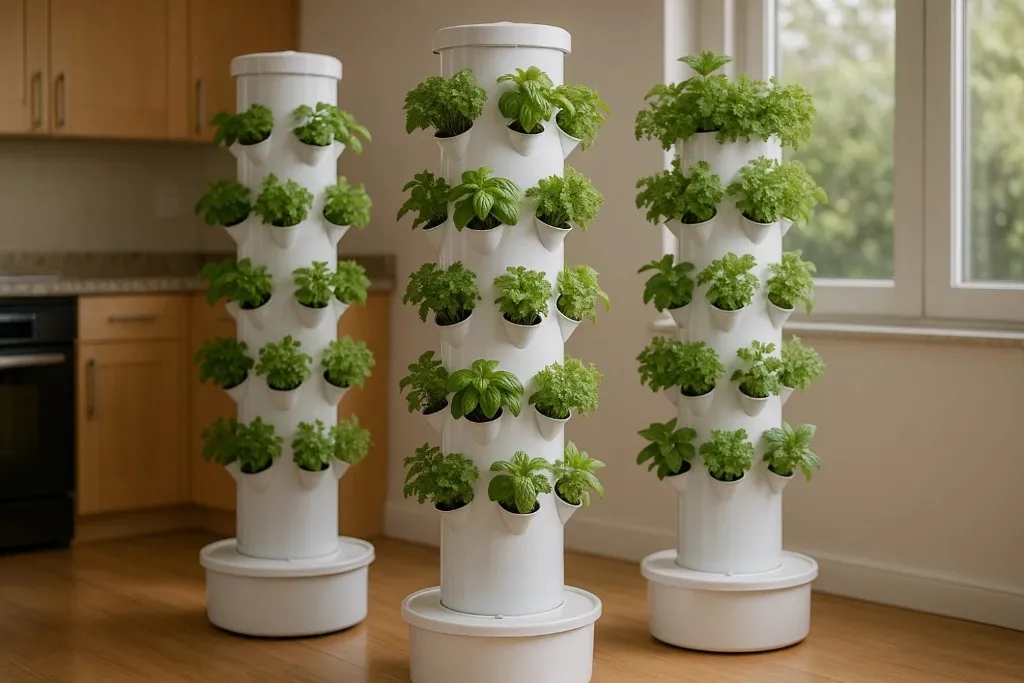
Vertical hydroponic towers are perfect for maximizing indoor space while growing multiple herbs without soil. These towers feature stacked layers that allow plants to grow vertically, which is ideal for small apartments or kitchens.
The hydroponic system circulates nutrient-rich water to each level, providing consistent hydration and nutrients to the herbs. Herbs like mint, parsley, and basil thrive in vertical hydroponic towers. These systems are great for people looking to grow a variety of herbs without taking up too much space in their homes.
10. Window-Sill Hydroponics
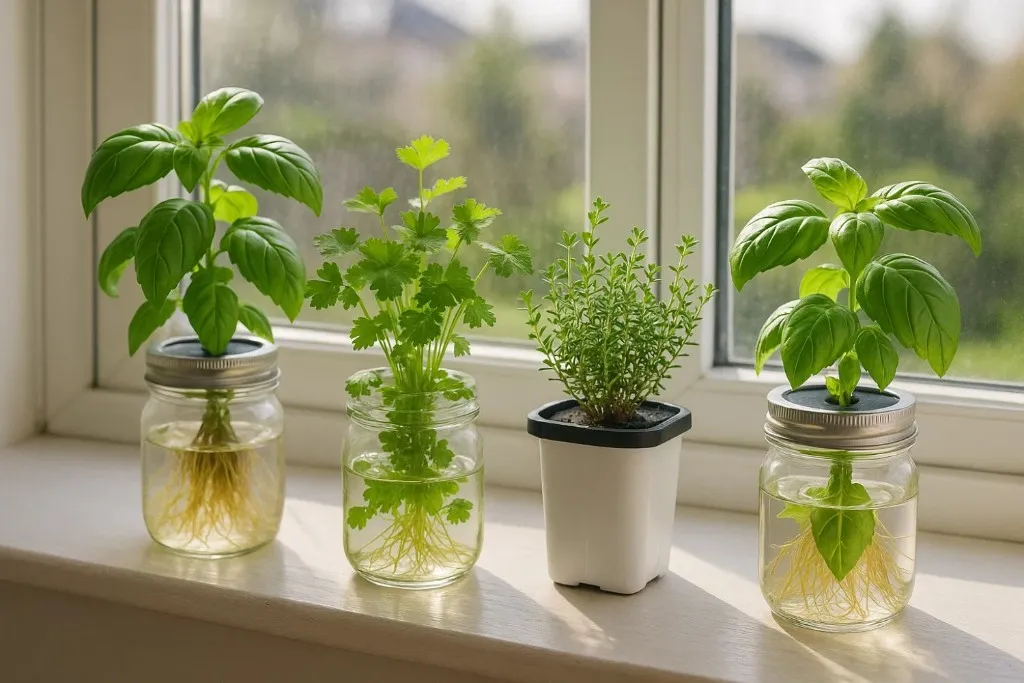
If you don’t have a lot of counter space, window-sill hydroponics offers a great way to grow herbs indoors without soil. This method utilizes small containers, such as mason jars or hydroponic kits, placed on windowsills where they can receive natural sunlight.
The plants’ roots are submerged in a nutrient solution, and they are perfect for herbs like basil, cilantro, and thyme. With a bit of care, you can harvest fresh herbs year-round while enjoying the convenience of having them right by the window.
11. LED Grow Lights for Indoor Herb Gardens
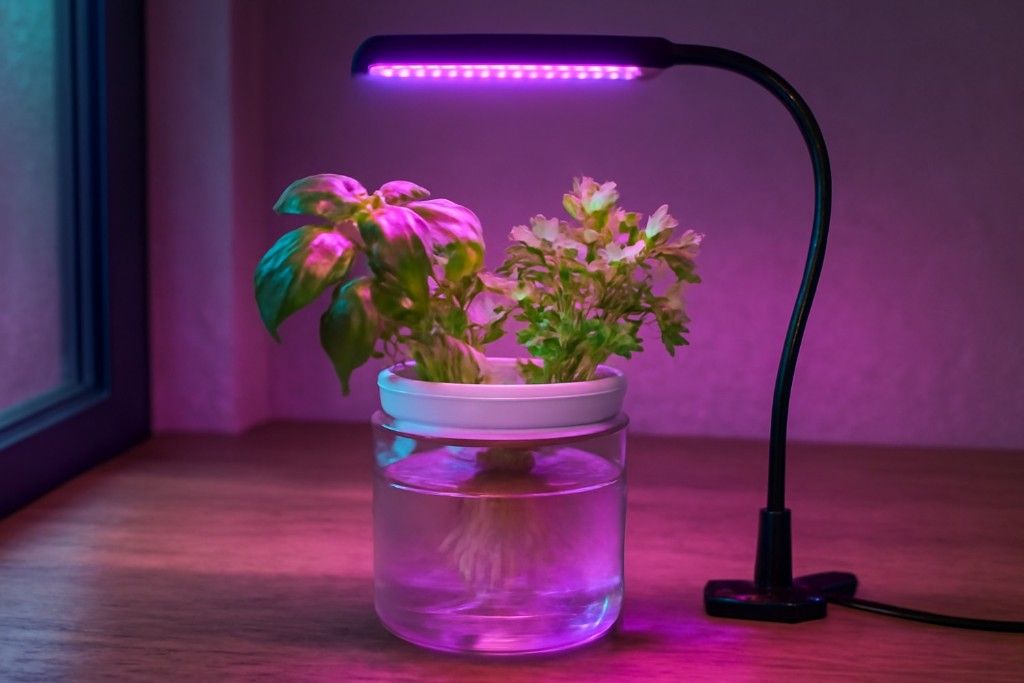
Growing herbs indoors without soil often requires additional light, especially if natural sunlight is insufficient. LED grow lights are energy-efficient and provide the necessary light spectrum for optimal plant growth. They can be used in combination with hydroponic or aeroponic systems to ensure that your herbs receive the right amount of light.
LED lights are particularly beneficial for herbs like mint, basil, and chives, which require at least six hours of light per day to thrive. These lights are easy to use and can be adjusted to provide the perfect growing environment for your plants.
12. DIY Hydroponic Systems
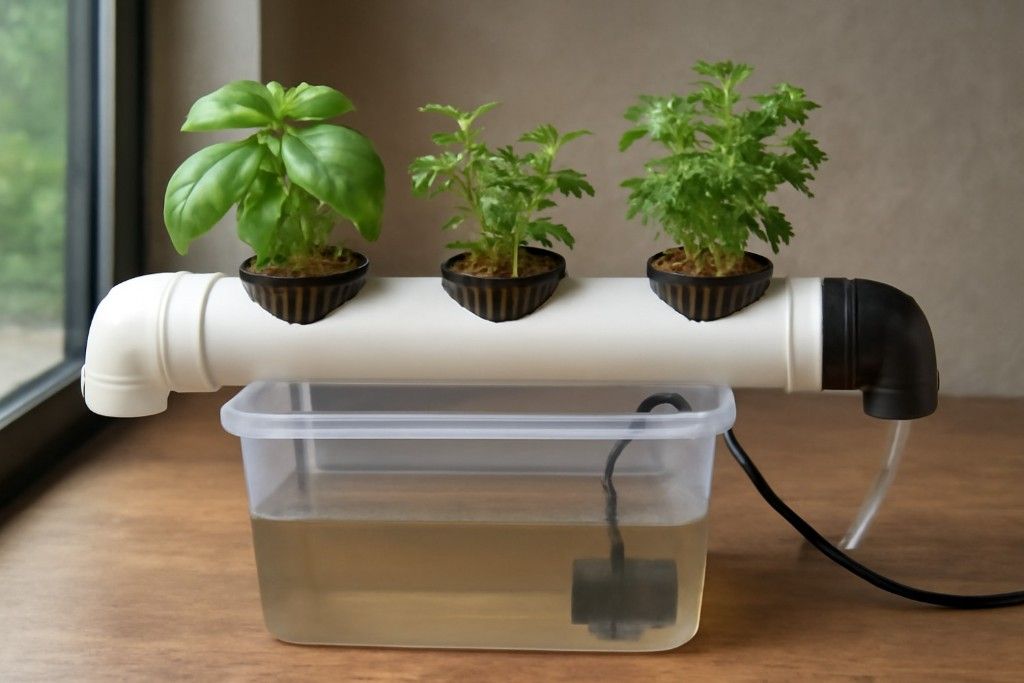
For those who enjoy a hands-on approach, creating a DIY hydroponic system is a great way to grow herbs indoors without soil. By using everyday items such as PVC pipes, containers, and a pump, you can set up your own hydroponic garden.
DIY systems allow you to customize the setup to fit your space and needs. Whether you want to grow basil, oregano, or cilantro, a DIY hydroponic system can be a fun and cost-effective way to grow herbs indoors without the need for soil.
13. Hydroponic Nutrient Solutions
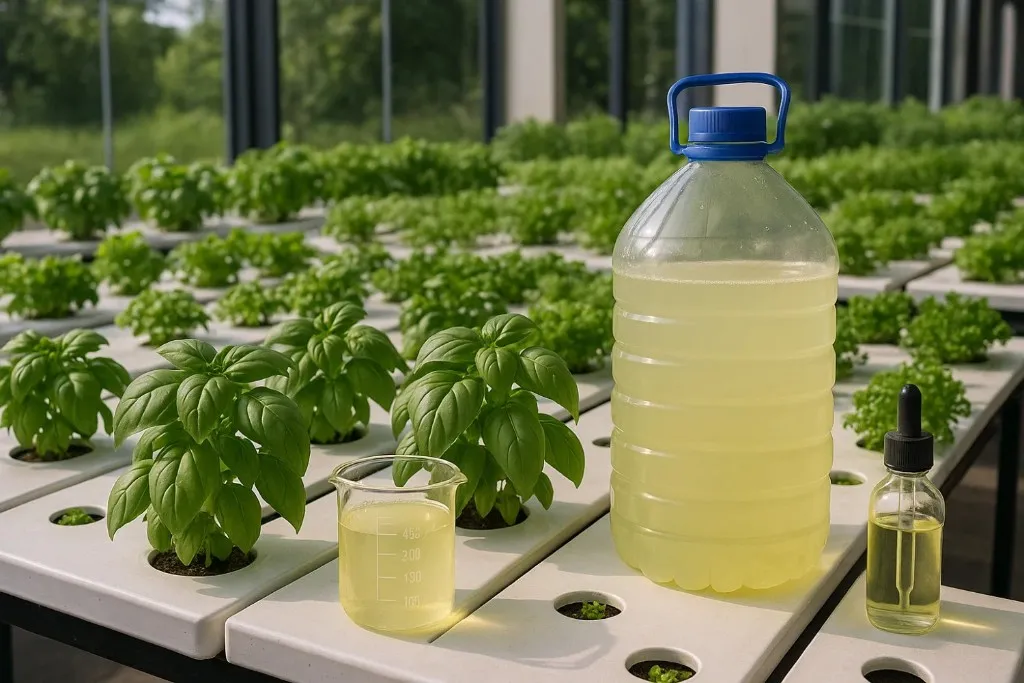
For successful hydroponic herb gardening, having the right nutrient solution is key. These solutions contain the essential minerals and vitamins that plants need to grow, such as nitrogen, potassium, and phosphorus. Different herbs have different nutrient requirements, but most nutrient solutions will work well for popular indoor herbs like basil, thyme, and parsley.
Regular monitoring and adjusting the pH of the solution ensures that plants are getting the nutrients they need. You can purchase pre-made solutions or mix your own at home to ensure optimal plant health.
14. Use of Coconut Coir in Soil-less Gardening
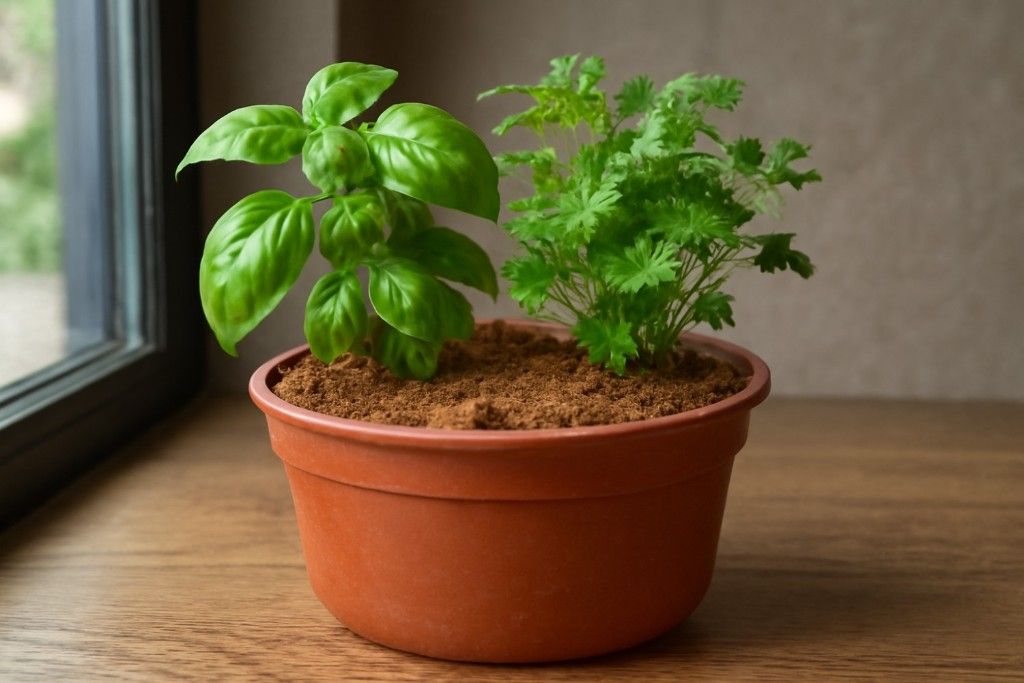
Coconut coir is a sustainable and effective alternative to soil in soil-less gardening methods. This natural material, derived from coconut husks, provides excellent drainage and aeration, making it ideal for growing herbs like basil, mint, and cilantro.
Coconut coir is also pH-neutral, which makes it suitable for most herb varieties. It retains moisture well and is often used in hydroponic and wick systems. Additionally, coconut coir is environmentally friendly and can be recycled, making it a popular choice for eco-conscious gardeners.
15. Herb Grow Pods
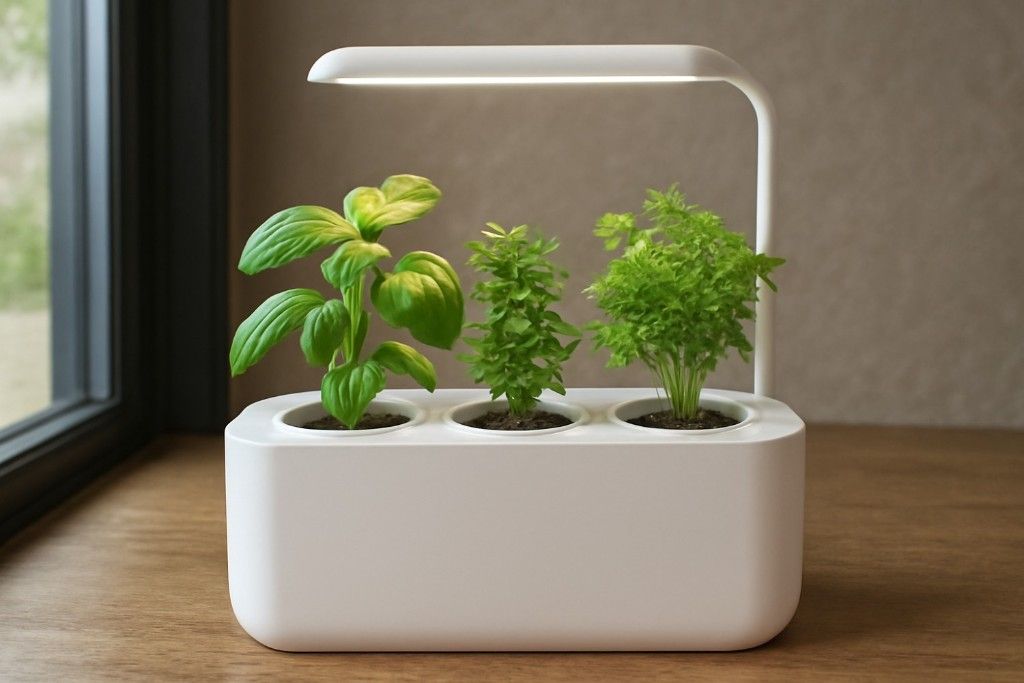
Herb grow pods are small, self-contained units that allow for soil-less herb gardening indoors. These pods often include a growing medium such as coconut coir or perlite and can be used with a hydroponic or aeroponic system. They are compact, making them perfect for kitchens, windowsills, or countertops.
Many herb grow pods come with built-in LED grow lights and automated watering systems, making them incredibly low-maintenance. This method is ideal for growing herbs like basil, mint, and parsley, ensuring that your kitchen is always stocked with fresh herbs.

